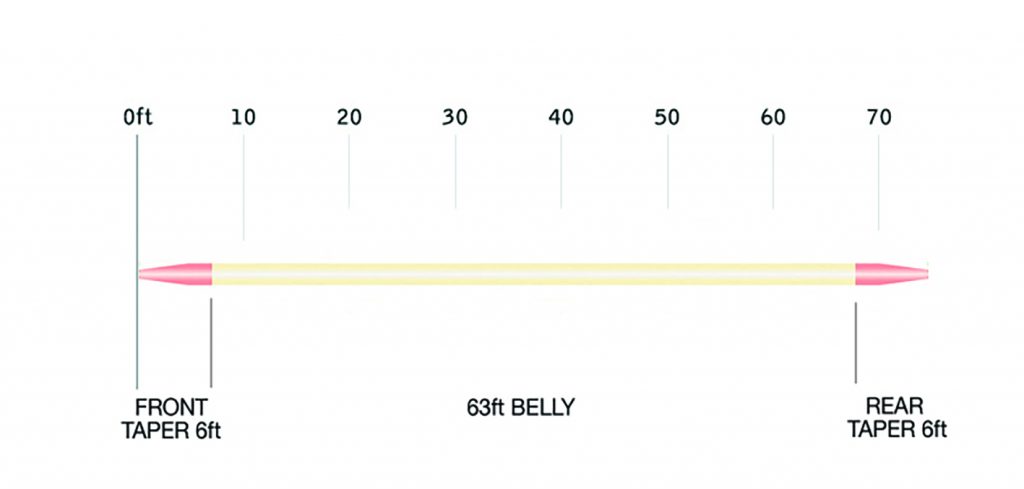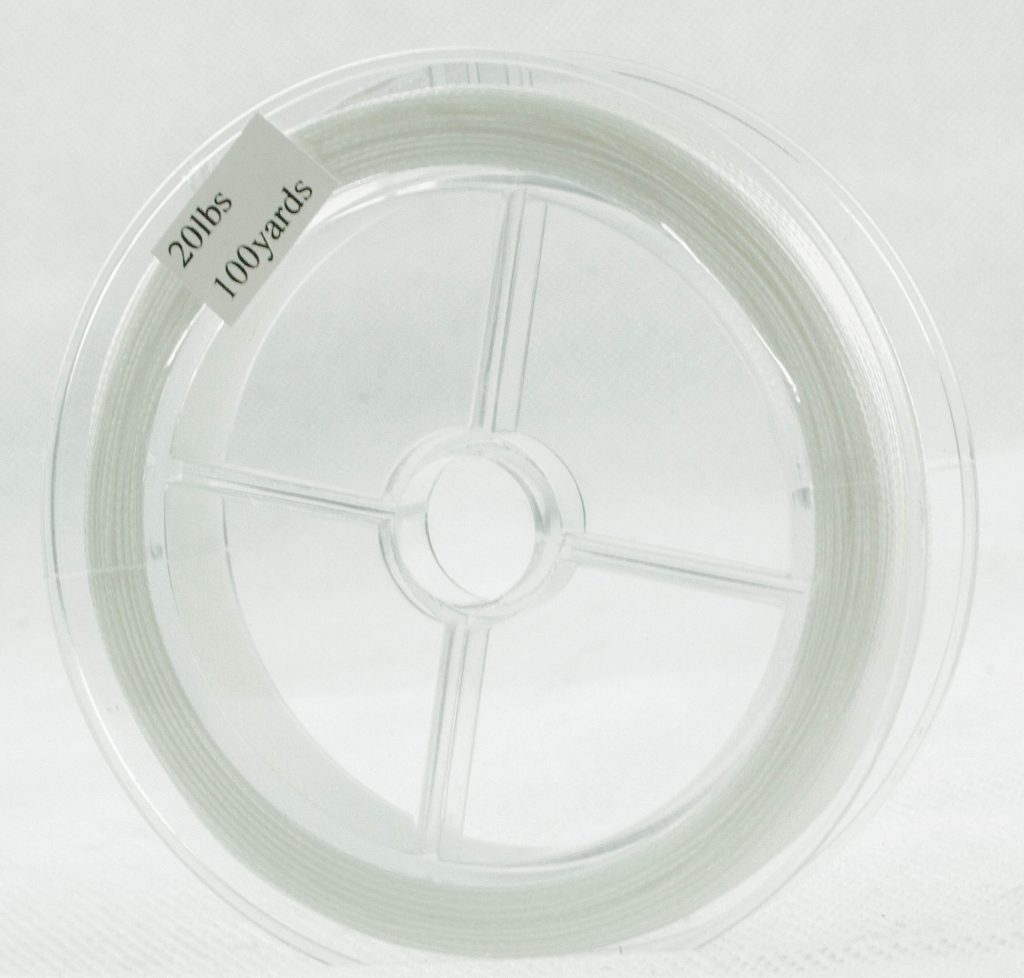Free Video River Fly Fishing Course
20+ instructional videos, shot in 4k. Free to all new and existing newsletter subscribers – Click Here!

Line weights and matching the rods.
The main difference between fly fishing tackle and any other type of fishing is the line. The fly line is a thick plastic line with a strong braid core. The purpose of the fly line is to give the angler casting weight. In other types of fishing, the casting weight is provided by a weight on the end of the line such as a piece of lead. In fly fishing there is no weight at the end of the line but a casting weight is still required hence the thick plastic line.
Fly fishing lines are available in many different weights. Each weight is given a number and the higher the number, the heavier the line. This scale is known as the AFTM (Association Fishing Tackle Manufacturers) rating.
A fly cast works by allowing the rod to bend against the weight of the line while casting. This is often referred to as ‘loading the rod’. It is very important therefore to put sufficient bend in the rod, but not too much as to overload it. To accomplish this it is crucial to match the weight of your line to the rod.
This is very easy to do as all modern fly rods will clearly indicate which weight line is required in order to achieve the optimum performance from the rod. Make sure that you buy a line that matches the AFTM rating of your rod.
Floating or sinking lines
If you are fly fishing for trout in the river then a floating line is all you will need. If you are fishing on lakes and reservoirs then you may need to invest in some sinking lines too. A sinking line enables you to get your wet fly down to deeper depths than the floating line will allow.
Types of lines:
Floating: Simply the whole line floats on the surface of the water.
Sinking: The whole line will sink once cast on to the water. You can buy lines with different sink rates, some sink faster than others.
Intermediate: An intermediate line is essentially a slow sinking line that takes the fly down a bit deeper and gets the fly line under the surface.
Sinking tip: The main section of the line floats however the tip of the line sinks. This is useful to get your fly down a little deeper but without the fly sinking all the way to the bottom.
The taper of the fly line
The taper of the fly line is how the diameter of the line changes throughout the length of the line. Different kinds of tapers are suitable for different contexts, conditions and casts. As a beginner, you are best off sticking with a weight forward taper. Modern fly lines now come in an array of different tapers all claiming to provide different benefits. The most common tapers are explained below.

Weight forward: The weight forward line is by far the most popular fly line for trout fishing. As the name suggests the forward end of the line is slightly heavier by means of the line tapering to a thicker (and heavier) section at the end of the line. This helps to ‘load’ the rod with energy whilst casting. As a beginner this is the line I would recommend using.

Double taper: The double taper fly line also tapers to a thicker section of line. However, this section is situated right in the middle of the fly line. Some anglers prefer double taper fly lines for certain casts such as the roll cast. In theory they are also reversible so when one end wears out you can reverse the line and have a fresh line to cast with.
Shooting head and short taper lines: There is a whole range of shorter taper and shooting head fly lines available. These lines generally have a thick running line and then a short fat section at the very front of the line. This fat tapered head really loads the rod when casting and the thin running line offers little resistance allowing the caster to shoot out powerful long distance casts using the minimum of casting strokes. They are great for casting large streamer type flies for pike or saltwater fishing but offer a clumsy and sometimes splashy presentation.
Backing
A fly fishing line is around ninety feet in length which sounds a very long but if you hook into a big fish in the river, the speed of the fish and the power of the current can easily strip this off the reel in seconds. This is when the backing comes in useful. Backing is a strong braid line (usually over twenty lbs of breaking strain) that is attached to the reel end of the fly line and spooled round the reel. Once the fly line has all been stripped off the backing continues the line so you do not run out.
When you buy a fly reel it will usually tell you how much backing to attach. The amount of space for backing will depend on the weight of fly line you are using. This is because the heavier the fly line, the greater the diameter meaning heavier lines will have less room for backing.
Free Video River Fly Fishing Course
20+ instructional videos, shot in 4k. Free to all new and existing newsletter subscribers – Click Here!



